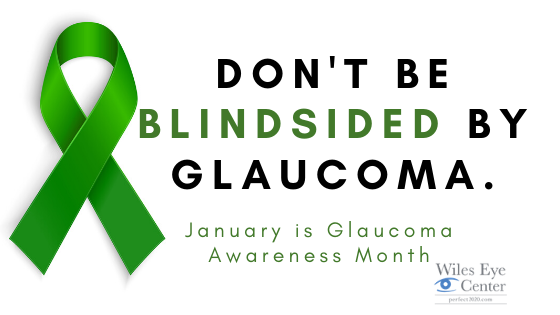
Glaucoma is the leading cause of blindness across the globe*. Glaucoma alone affects more than 60 million people worldwide, and nearly 3 million people nationwide*. Glaucoma can cause blindness, and vision loss resulting from glaucoma is irreversible. Nearly half of those who suffer from Glaucoma are unaware they even have it*. Due to these unsettling facts, it is very important for us to educate people and bring awareness to this disease. f
What is Glaucoma?
Glaucoma is a group of diseases that cause damage to the optic nerve- a bundle of over 1 million nerve fibers that are responsible for transmitting signals from the retina to the brain.
How Does Vision Loss Occur from Glaucoma?
Vision loss occurs as a result of damage to the optic nerve. This damage occurs when the eye is unable to drain fluid naturally, which causes abnormally increased pressure within the eye, damaging the optic nerve.
How is Glaucoma Cured?
There is currently no cure for glaucoma, and vision loss suffered as a result of Glaucoma is permanent. There are, however, multiple treatment options to help those dealing with Glaucoma.
What Treatment Options are there for those Suffering from Glaucoma?
Treatment options can vary. Treatment options range from oral medications to laser surgery. Some treatment options for Glaucoma are eye drops, Argon Laser Trabeculoplasty, Selective Laser Trabeculoplasty, Laser Peripheral Iridotomy, Cycloablation, and traditional surgery. Traditional surgery can entail an implant to help the eye drain fluid on its own, or a new opening can be created for fluid to be passed through.
What are the Symptoms of Glaucoma?
In its early stages, Glaucoma shows no symptoms. As the condition progresses, however, vision loss or distorted vision can occur.
What are the Different Types of Glaucoma?
There are many different types of Glaucoma, including:
- Open-Angle Glaucoma- this type of Glaucoma affects more than 50% of those with the condition. Open-Angle Glaucoma occurs when fluid is draining too slowly and causes a build-up of pressure within the eye.
- Normal-Tension Glaucoma- this type of Glaucoma occurs with a normal amount of pressure within the eye, but damage to the optic nerve occurs as in the other forms of Glaucoma. This type of Glaucoma can also be referred to as Low-Tension Glaucoma.
- Angle-Closure Glaucoma- this form of Glaucoma is hereditary. Angle-Closure Glaucoma occurs when the angle of the chamber through which fluid is drained is smaller than normal, causing fluid to build up within the eye.
- Acute Glaucoma- This type of Glaucoma occurs suddenly and can be very painful. Acute Glaucoma is very similar to Open-Angular Glaucoma, except it rapidly occurs over a very short period of time. Those who experience Acute Glaucoma should seek help immediately.
- Pigmentary Glaucoma- This type of Glaucoma occurs when pigment becomes detached from the back of the eye. When the pigment is essentially rubbed off from the back of the eye, it can become lodged in the meshwork of the eye, inhibiting the eye from draining fluid normally and can cause a build-up of pressure.
- Exfoliative Glaucoma- This type of glaucoma can occur in some patients with a condition called Exfoliation syndrome. Similarly to Pigmentary Glaucoma, this occurs when pigment detaches itself from the back of the eye and clogs the meshwork. According to the Glacucoma Research Foundation, those with Exfoliation Syndrome experience rapidly progressing symptoms compared to those with normal Open-Angular Glaucoma. They also state that Exfoliative Glaucoma has recently been linked to genetic abnormalities.
- Child Hood and Trauma-Related Glaucoma- Both of these types of glaucoma give away all the information you need to know within their names. Obviously, childhood glaucoma occurs within children, but more specifically this type of glaucoma occurs most commonly in infants and very young children. Childhood glaucoma often occurs as a result of genetics or abnormal fetal development. With trauma-related glaucoma, open-angular glaucoma can occur as the result of blunt-force trauma to the eye, or an injury-causing penetration of the eye. Glaucoma as a result of injury can occur anywhere from minutes to years after the injury.
As always, early detection of Glaucoma is necessary to preserve vision and prevent blindness. If you have any questions or would like to make an appointment, please call us. The number to our Kansas City location is 816-455-2020. Our St. Joseph’s office location can be reached by calling 816-279-7015.

Comments are closed here.